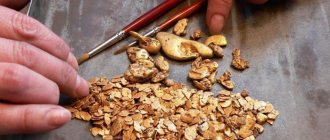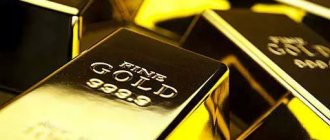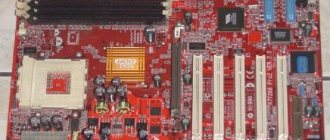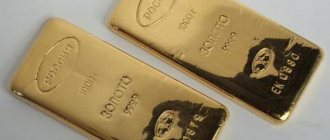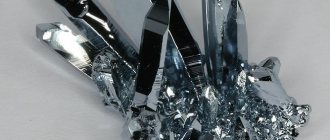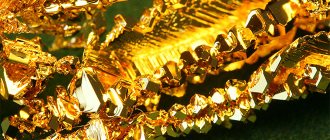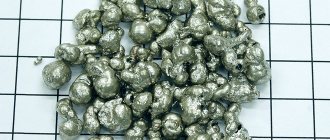Some hundred years ago, element 46 of the periodic table - palladium - did not have the same value as other rare metals.
Even in the 90s of the last century, when household refining of secondary precious metals was at the peak of popularity, palladium was of little interest to miners, unlike platinum, gold and silver.
The picture has changed dramatically now.
The metal belongs to the platinum group. Finds application in various industries. This is first of all:
- aerospace and military direction;
- automotive industry (production of catalysts for all types of transport);
- electronics;
- medicine.
Research is actively underway to expand the practical application of this element.
Thanks to this excitement, the price of palladium has increased significantly . Today, the cost of this element varies between 1 – 2 thousand rubles per 1 g. This fact, in turn, makes palladium refining an attractive undertaking from the point of view of economic benefits.
The metal is actively traded on world exchanges. It has a favorable prospect for long-term investment.
What radio components does it contain?
Before refining this precious metal, it is necessary to have information about which devices contain the largest amount of Pd.
Speaking about equipment, of course, we mean the radio components that make up their design.
From the total number, capacitors marked “KM” and a digital designation from 3 to 6 are distinguished as elements with the highest palladium content.
These parts are highly valued by buyers - you don’t have to refining radio parts containing palladium, but hand them over in their “pristine” form.
Capacitors of this class, encased in a ceramic case, are used in the production of motherboards for mobile devices, computers, and household appliances.
In addition, the following devices are of interest :
- oscilloscopes;
- generators;
- meters;
- analyzers;
- frequency meters and voltmeters;
- resistors and switches.
We suggest looking at the table, which indicates which radio components contain palladium, and how much of it is there:
| Item name | Palladium percentage (%) |
| Spirals and wires from reohords (recorders) marked “KSP”, “KSU”, “KSD” and potentiometers “PTP”, “PPML”. | 80 |
| Contacts from the dismantled switch "KSP" | 78 |
| The rheochord removed from the potentiometer “PPML IM-5” is “black wire”. | 60 |
| Slider (contact) removed from resistors “SP5”, “SP3-37”. | 58 |
| The needles removed from the contact group of the SP5-1V and SP3-37 resistors, as well as the strings of the MKS blocks, contain the same amount of palladium. | 28 |
| The wire used in the resistor rollers, as well as the contact group of the same device, is marked “PP3” and has a digital designation from 40 to 47. | 20 |
| Contact areas, SP5 circles. | 18 |
Transistors, thyristors, and other semiconductor devices that contain palladium are not of great interest , since there is very little of it there . Therefore, these devices are not included in the table, since refining Pd from these devices is an unprofitable undertaking.
Gifts of Potentiometers
If you don’t want to hunt for “golden” capacitors, where the amount of gold per thousand pieces is measured in kilograms, then you can start looking for ordinary capacitors. Every Soviet capacitor had to contain silver.
Potentiometers, quite commonly used devices in the USSR, also actively used precious metals. But often it was only silver and palladium. About twenty years ago, when palladium cost pennies, buyers bought potentiometers because of the availability of silver. If the potentiometers sold did not contain silver, but contained a palladium alloy, then buyers often refused to buy such models of potentiometers.
Which Soviet measuring instruments are the richest in precious metals?
Experts point out that radio components containing precious metals were widespread in Soviet times, but only a few could boast of a huge amount of valuable metals.
There is little palladium in potentiometers - at most 6 grams. But if you consider that a gram of palladium now costs more than 6 thousand rubles, then now the hunt for potentiometers is worth the effort. ◄Back to articles
Where else can you find it?
Here I would like to dispel the myth about the legendary Singer sewing machine, the patent for which was received by its American inventor Isaac Singer in 1851.
What kind of “treasures” were they looking for in this mechanism?
For many years, people believed that the machine had a component (drive shaft) made of precious metal , the purpose of which was to resist corrosion.
Palladium was one of the group of precious metals from which the drive shaft of the machine was supposedly made.
In fact, the fact of the presence of gold, platinum, and palladium in the Singer sewing machine has not been established . This applies to German and Russian-made models released from the factory assembly line in Podolsk before and after the revolution.
But it makes sense to carefully examine a deteriorated engine from a Pobeda car if its numbers have not been changed and are in this range - from “20-0045203” to “20-0056152”.
The fact is that relatively recently, while sorting out the archival rubble of the Gorky Automobile Plant, quite interesting documents were discovered - author's certificate No. 86642. This interesting document dealt with the advantages of using palladium alloys in some automotive components .
And not an unfounded description of the advantages, but with complete evidence:
- the service life of palladium alloy mechanisms (shaft, bearings) increases by 45% relative to steel analogues;
- engine operating time in the absence of appropriate lubricants increases by 8 times;
- immunity of Pd to sulfuric acid, which was part of cleansing oils, for example, AKp-5.
As a result, for more than a month in 1950, cars equipped with palladium camshafts rolled off the GAZ assembly line. more than 2 thousand cars in this way , the innovative proposal was criticized.
First of all, from the point of view of economic benefits, steel in any version is much cheaper than palladium.
The technological process for the production of steel elements is intellectually simpler and has already been established.
The result is that everything was returned to normal, and the remaining palladium alloy shafts were “thrown away” at retail as spare parts.
Of course, finding a “Victory” with the “engine” of the corresponding series is not an easy task . However, the lucky one will get a good reward - now the cost of that very palladium shaft is a fortune.
It is much easier to find gas masks that used filters marked “DP-2”. For example, the GP-4-U gas masks, familiar from school.
In these filters, the content of powdered palladium is 2 g. It would seem that the weight is insignificant. However, this is not the camshaft from Pobeda to look for.
We buy Autocatalysts
Autocatalysts
The catalytic converter (catalyst) is one of the most important components of a vehicle's exhaust system. It is designed to ensure compliance with standards for the volume of emissions of harmful substances into the environment. You can often find information on the Internet, from which it follows that precious metals can be extracted in small quantities from one extracted component. However, is this possible to do in practice?
Part design
The catalytic converter contains a structure made of ceramic or metal and consisting of a larger number of honeycombs. Their surface is additionally covered with a layer of metal of small thickness.
The internal design of the component provides an increase in the surface area that comes into contact with the exhaust gases. There is a special catalytic layer on it. Thanks to its presence, the necessary chemical reactions occur. They help transform exhaust gases into environmentally friendly ones.
The honeycomb of the mechanism is coated with an alloy containing precious metals. To create it, platinum, palladium and rhodium are used, which have a high cost. Their price can be two or more times higher.
In addition to the listed materials, modern cars produced in Germany and the UK include catalysts containing iridium.
Vehicles made in Japan and China have 15% less platinum in their catalytic converters than European brands. Domestic cars contain 40% less rhodium than their European counterparts. American-made car catalysts contain 50% less precious metals than those made in Europe.
Our company has been purchasing catalysts and is ready to offer favorable conditions for cooperation.
Waste enrichment methods
The extraction of precious metals and automotive components is carried out using hydrometallurgical and pyrometallurgical methods.
The raw material for processing contains a large volume of ceramics, as well as a small concentration of noble metals.
When processing components of radio electronics, scrap is used, which, in addition to valuable elements, contains plastic particles.
In the process of recycling automobile mechanical waste, the main task is to extract precious metals that can be used for subsequent secondary processing.
The hydrometallurgical method of extracting precious metals in a catalyst is used in compliance with the following sequence of actions:
- leaching of foreign materials using mixtures of acids, the composition of which is determined depending on the characteristics of the noble metals contained, which is carried out at temperatures exceeding 100 C;
- acid-insoluble material is washed repeatedly with water;
- At a temperature of 200 C, the semi-finished product is dried, and at a temperature of about 600 C, calcination is carried out.
How is palladium mined?
Palladium is extracted using other methods, which makes it possible to rid the material of foreign impurities that can reduce the cost of the material.
The most notable is the galvanic method or electric arc heating. In most cases, extraction is accomplished by heating the catalyst to a temperature of about 500 C, and then fluoridation is performed. The choice of this technique ensures the extraction of almost pure palladium, in which fluorine is present in a small volume.
The next stage of processing the material consists of cleaning it with mineral acid after it has cooled to 100 C. The procedure ensures that the metal is cleaned of fluorine and free of impurities.
Content of precious metals in different types of catalysts
Catalysts are purchased at a fairly high price . The metals used are rare earth. Their production volumes decrease annually, and their exploitation as secondary raw materials is relevant only on an industrial scale. From one catalytic converter it is possible to extract 0.05-0.1 grams of noble metals, which is possible when using 50 grams of various reagents. The volume of the latter can be reduced only in the case of working with a large amount of source materials and using cumulative extraction methods. Precious metals are extracted from the following types of catalysts:
- Automotive. They contain two groups of alloys: palladium in combination with iridium or palladium with rhodium.
- Industrial. Catalytic converters of this type can include complexes of several components: palladium, rhodium and platinum, as well as a pure monometal. In some types, silver can be used as a catalytic reagent.
- Industrial catalysts used for oil refining. They will include combinations of nickel with molybdenum or platinum with aluminum oxide.
Conducting a preliminary cost assessment and receiving materials
Acceptance of secondary raw materials is carried out by specialized companies, which mainly enter into cooperation with processing enterprises. Catalyst evaluation is carried out using the following equipment:
- spectrometer - a device designed to determine the chemical composition based on spectral analysis;
- scales with high measurement accuracy;
- tables for determining prices based on product labeling.
The price of precious materials is determined by the London Stock Exchange and exchange rates. The data from the table is used as a basis for calculations after obtaining the results of the analysis on the percentage of noble metals. Secondary analysis is performed after grinding the ceramic honeycomb, which allows us to obtain the average element content. Depending on the values, the blowing cost will be determined. The products differ in the following parameters:
- type;
- model;
- mileage;
- terms of Use.
Old catalysts installed in Soviet-made cars are readily bought up, since they contain an increased content of valuable elements.
We purchase used catalysts and radio components at high prices and are ready to advise anyone on relevant issues.
Refining of parts containing Pd
There are several ways to extract palladium from various radio components. There are two methods you can implement at home :
- electrolytic;
- chemical.
The first method is to use sulfuric acid as an electrolyte, cathode and anode , as well as a power supply.
The second method involves the use of a chemical reagent with the expressive name “Royal Vodka”.
It is a mixture of hydrochloric and nitric acid .
You can purchase it or make it yourself if you have the ingredients.
Both processes are unsafe, but to varying degrees.
In any case, it is necessary to have personal protective equipment:
- rubberized apron;
- gloves;
- respirator;
- glasses.
All work is carried out using a fume hood or outdoors . Detailed information on the extraction of palladium from radio components and other elements can be found in a separate article.
Ways to isolate metal
There are several ways to isolate Pd from microcircuits and capacitors.
The most popular method remains using the electrolysis process, or as a result of creating a whole chain of chemical reactions.
So, these are the methods:
- The metal is removed using an electrolytic reaction. It is created in saturated sulfuric acid. The very base of the copper part remains intact. As a result of the reaction, it is not Pd that is created, but only its compound, which is then dissolved in aqua regia. Sulfuric acid acts as an electrolyte, the part as an anode, and lead as a cathode. The voltage is left at 12 V. It is started until the part is immersed in the prepared mixture. Palladium forms as black powder or flakes. Do not allow the electrolyte to become too hot. If this happens, it must be cooled. When all the palladium has been removed, the solution should be replaced with a new one. The sediment is treated with aqua regia.
- If there is an alloy of palladium with another element, hydrochloric acid and ammonia solution are required to remove it. These substances separate Pd from other elements. The element is perfectly soluble in so-called aqua regia and nitric acid. To determine for sure the palladium content of a substance, it is necessary to monitor its color during the reaction. If the color changes to brown, then Pd is there and you can continue. Pd with gold is dissolved using nitric acid; with silver - using aqua regia. Then water is poured on top and the mixture is left for 24 hours. Then the silver chloride is filtered. This is done to ensure that only palladium and gold remain in the solution.
- Then ammonia is added to the solution in such an amount that there is an excess of it, and everything is left as is for 48 hours. Then the next stage of filtration begins. This time the gold is filtered out so that only palladium remains. The Ag precipitate is placed in hydrochloric acid, where it is reduced with zinc. Palladium is processed differently: hydrochloric acid is added to the filtrate. The result is a reaction that creates ammonium tetrachloropalladate. The precipitate is filtered for several hours, dried and calcined at high temperature (500 degrees Celsius). The result is a palladium refining product in powder form. It happens that palladium sulfide is obtained. In this case, it needs to be fused. At high temperatures, the substance will again be restored to its metallic state.
Summarize
Over the past decade, the metal has strengthened its quotations on international exchanges. European Union standards regarding automobile exhausts containing carbon dioxide and heavy metals dictate the use of palladium as a catalyst in absolutely all vehicles.
This fact, as well as the increasing use of Pd in such industries as the military, aerospace industry, and the production of high-precision equipment, ranging from household devices to pacemakers, paint a rosy outlook for the metal in terms of cost growth.
Therefore, palladium refining is a promising activity . Moreover, the raw material base is very extensive.
Why separate metal?
Many chemists use palladium isolated from radio components as a catalyst. Jewelers refine this metal to repair palladium jewelry. Some craftsmen sell the mined precious metal to pawn shops, which falls under Article 19.14 of the Code of Administrative Offenses of the Russian Federation.
Many are attracted by the fact that the cost of Pd on the precious metals market today exceeds the cost of gold. According to experts, this year the price of this element will rise, as demand significantly exceeds supply.
Sales of waste
To sell electronic waste and autocatalysts in order to obtain financial benefits due to the presence of platinum in them, both individuals and legal entities must contact the appropriate organizations involved in the reception, evaluation and processing of electronic and catalytic scrap for refining industries.
Among such organizations:
- ,
- ,
- NPO "Radiotechnical Precious Metals".
With the help of such companies, it is possible to carry out an expert assessment of the source material using physical and chemical analysis methods for an objective assessment of the cost of scrap and further professional processing of raw materials.
Application of platinum
Platinum, a chemical element on the periodic table, is a native silvery, white metal similar to silver. It differs from silver in its refractoriness, resistance to acids and corrosion. Indispensable when it comes to the production of RECs such as capacitors, resistors, switches, connectors, used in almost all types of equipment and devices. Scientists say that platinum is like salt in cooking. Without platinum, the development of electrical engineering, radio engineering, precision instrument making, as well as instruments and equipment for the aerospace sector is impossible. Used in all modern technologies. Platinum is used both as an alloy and as a pure metal.
Pure platinum. Application
- Electrolysis (mesh, cathodes), dies, production of winding wire, thermocouples, electrical resistance furnace;
- In chemical production (catalysts for the production of acids (sulfuric, nitric), ammonia oxidation, for dehydrogenation, hydrogenation, alcohol reduction;
- In jewelry production;
- Coating of dishes, industrial baths, tanks with platinum.
Platinum in alloys. Application
- In radio electronics – production of contacts, vacuum devices, electrodes, thermocouple wire.
- In the chemical industry - production of catalysts, electrodes, meshes, filters.
- In medicine: dentistry, traumatology, surgery (production of prostheses, instruments).
This is just a small part of the uses of this precious, unique metal. So, today platinum has begun to be used in the automotive industry to create air purifiers, filters, and neutralizers.
...or how I sold radio components for scrap.
If you watched the animated series Futurama, you may remember how the robot Bender was overcome by greed and sold his titanium body when prices for it skyrocketed. So, it is this episode that I remember when I sell radio components.
For those who are not in the know.
Almost any electronic component, be it a transistor or a microcircuit, contains precious metals: gold, silver, platinum, palladium, iridium, etc. These metals can be extracted from used and old radio components and then reused.
Luckily, I came across several printed circuit boards with “golden” microcircuits and other radio components. Before this, I was not interested in the delivery of radio components, and I had never even seen gold-plated components. I don’t need a large number of obsolete and identical radio components, and I decided to hand them over. Well, and thereby earn a little extra money. So I became a radio vandal and went over to the side of evil.
In the photo - an integrated stabilizer, a KR142EN1B microcircuit in a case made of “pink” ceramics with gold plated! It is from such microcircuits that gold can be extracted, which is why they are accepted for recycling.
Which radio components contain gold?
Microcircuits containing gold are not common, but they can still be found in old radio equipment. I will show only a few of them.
These are “pink jackets” - 514ID2 decoders (analogous to K514ID2) with gold-plated terminals. The markings indicate that they were manufactured in 1992.
Read also: Route technological map sample
These 514ID1 decryptors will be older, namely, born in 1988. There's more gold on them. Look at the belly.
This is what gold chips of the 564 series (K564) look like. In this photo: Arithmetic-logical device - microcircuit 564IP3 (analogous to K564IP3) and adder 564IM1 (1KIM1).
Microcircuits 564LS2 (K564LS2). The film on the terminals is varnish. They buy them at a price of about 15 - 20 rubles each.
Hard logic squad - 564LE5 (1KLE5) microcircuits. They have golden legs and bellies. On the market they are accepted for 10-12 rubles each. By the way, the microcircuits in such cases are quite compact, they can be used in homemade designs. It will turn out expensive and angry.
This is what the 564LE5, 564LP2, 564TM2, 1KLA8 (564LA8), 564LA7 (1KLA7), 1KLA9 microcircuits look like in a “golden box” package.
For those who don’t know, microcircuits of the K564 (564), K176, K561, K1561 series are analogues. Produced in various cases. For example, I have only seen the K176LA7 microcircuit in a plastic case. And its analogue 1KLA7 (aka 564LA7, K564LA7) was seen both in plastic and in a metal case with gold leads.
In general, as I understand it, microcircuits of the K564 series for military acceptance are marked without the first letter K.
Logic chips 109LI1. This is a 6-input “AND” element for working with a low-impedance load.
And these are the seven-segment LED indicators ALS314A (in a red housing) and 3LS321B1. Their conclusions are gilded. In addition, the crystal of each LED inside the indicator is connected to the terminals with a thin gold wire.
If you get your hands on such indicators, I advise you to keep a few for yourself. I especially like the miniature ALS314A. I saw somewhere that one craftsman assembled a wristwatch using such indicators!
Transistors, however, also hold real value! The photo shows a KT602B transistor with a gold-plated belly. If you see a similar transistor, be sure to tidy it up. For example, I have seen a yellow “belly” on transistors 2T608B, 2T603A, 2T312B and others.
Some transistors have yellow precious metal inside, for example, the powerful KT808 transistor. To get to it, the cap of the transistor is cut off.
I was a little surprised when I discovered gold even in transistors KT814 - KT817! If you bite through the body of the transistor, you can find a gold-plated base. That's it.
I sold about three hundred of these at a price of about 3-5 rubles apiece. But in some batches of transistors there is no such gilding, it all depends on the “antiquity” of the product. Also, in older products, the base is completely gilded, and not as in the photo - only half.
Transistor optocouplers 3OT127A.
When I saw the “golden” microcircuits and transistors in person, I was a little surprised. Have you been to shops where they sell jewelry? Rings, chains, earrings? Usually this is a small corner in some large store. So the color of these “jewelry” products is very different from the color of the gold-plated legs and belly of “golden” microcircuits.
It was then that the thought about the quality of these jewelry crept into my head. So, if there are girls among the readers, then I advise you to at least once look at the gold-plated contacts of the connectors or “golden” microcircuits. There will be something to compare with. Here is the SNP30P-B connector and its gold-plated contacts.
A scattering of such contacts looks very chic. It would be enough for a ring.
Of course, not the purest gold is used to apply gold plating to the microcircuit body, and the gold plating layer may be scanty. As I was told on the market, one old transistor in terms of gold content will outweigh a handful of “gold” microcircuits like K564TM2.
It is known that contact cleanliness directly affects the reliability of an electronic device. Therefore, the contacts of connectors and panels are covered with a thin layer of gold. It does not oxidize even when heated, and is resistant to oxygen, sulfur, and acids. For example, I found gold-plated contacts in sockets for RS-40-7 microcircuits.
And also in RS-28-7 panels.
Typically, one gold-plated contact is valued at 1 ruble. So with 5-10 RS-40-7 panels you can go to the cinema.
In miniature switches VDM1-8, VDM1-2, the contacts are also covered with a layer of gold plating.
One switch output is also valued at 1 ruble. I kept a few of these switches for myself. It's a shame to sell such parts for scrap. We can say that their reliability is backed by the most valuable commodity on Earth - gold!
Through the transparent plastic of the VDM1-2 housing, the characteristic yellowness of the current-carrying contacts is visible.
In all kinds of toggle switches, switches, variable resistors and relays, the contacts are coated with platinum and iridium alloys. In general, anywhere where repeated mechanical stress and wear occurs. Gold is not used due to its low mechanical strength. Switches VDM1-2 are apparently an exception. Most likely, they are designed for a small number of switchings.
Gold in imported radio components
Buyers treat imported radio components with distrust, but despite this they also accept them. If you have computer processors or motherboards lying around, you can also donate them. Motherboards are usually taken by weight. Cheap, they offered me 150 rubles. per kilo, but it’s better than if this board was rotting in a landfill.
I even found an ancient Intel® Pentium® processor for Socket 7, which was installed in some industrial computer.
I found a video on YouTube about how gold is mined from such minerals. The video is very interesting. Americans gut computer scrap, and in the comments they talk about how profitable it is, because the purity of gold varies, and, consequently, its price. In general, I recommend watching it.
Read also: DIY thermostat circuit with temperature sensor
Why are microcircuits coated with gold?
The fact is that gold is a noble metal. It hardly forms chemical compounds even when heated, and is resistant to acids. These qualities ensure clean and reliable contact. The absence of aggressive impurities guarantees the safety and quality of contact after a long service life of the equipment.
In this regard, the housings and pins of the microcircuits are covered with a layer of gold plating.
Where is the gold in microcircuits if they are in a plastic case?
Gold has good electrical conductivity and is easily soldered with soft solders. Pliable and stretches into very thin wire (1 gram Au
3.5 km. wire). And the most interesting thing is that it easily fuses with silicon and germanium! What if not gold wire to connect the silicon chip and external pins?
That is why the silicon chip in microcircuits is connected to external pins with gold wire. The gold wire from the chip to the terminals is easy to see through the transparent plastic of the LED. For example, I managed to take a picture of it in a flashing LED.
During the Soviet era, precious metals were not spared for the production of electronic components, especially for special-purpose electronics. Then, as now, documentation was compiled for each type of electronic product. It indicated which metals and in what quantities were used to produce one element.
If someone still has an old domestic tape recorder (for example, “Romantic”), then in the instructions for it you can find a page with a table. It indicates the content and quantity of precious metals in the filling of this device.
Subsequently, this made it easier to “evaluate” the product accepted for processing. This is why buyers prefer parts from the Soviet period and treat imports with slight mistrust.
Palladium scrap prices
Scrap prices depend on many parameters - purity, quantity, sample availability, brand popularity. If it is a pure element obtained through refining, there is a chance to sell it for a good price. In radio components, palladium is usually 500 fine, and its cost rarely exceeds 500 rubles per gram.
Reception points can evaluate the product individually, especially if the markings have been preserved. And some parts, such as capacitors, can be purchased by collectors at a cost that is several times higher than the cost of palladium in them. Therefore, before attempting to melt down scrap yourself, consult with specialists.
